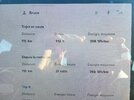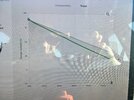Resist
Active Member
Because often I couldn't leave for a trip exactly when it finished charging to 100%, and didn't want to leave it sitting there. And on the highway it always seemed to go from 100% to 90% in like 15 minutes of driving, so 100% doesn't give me much more range.Why not 100%? There's not really any significant downside, unless you're ONLY taking trips.
But I was kind of hoping that if I did a BMS recalibration I might get some of my range back, just not been able to quite get the procedure down or have the time to get the percentages down and up for it. I can't wait for better battery technology, just hope I'm alive to be able to enjoy it.




